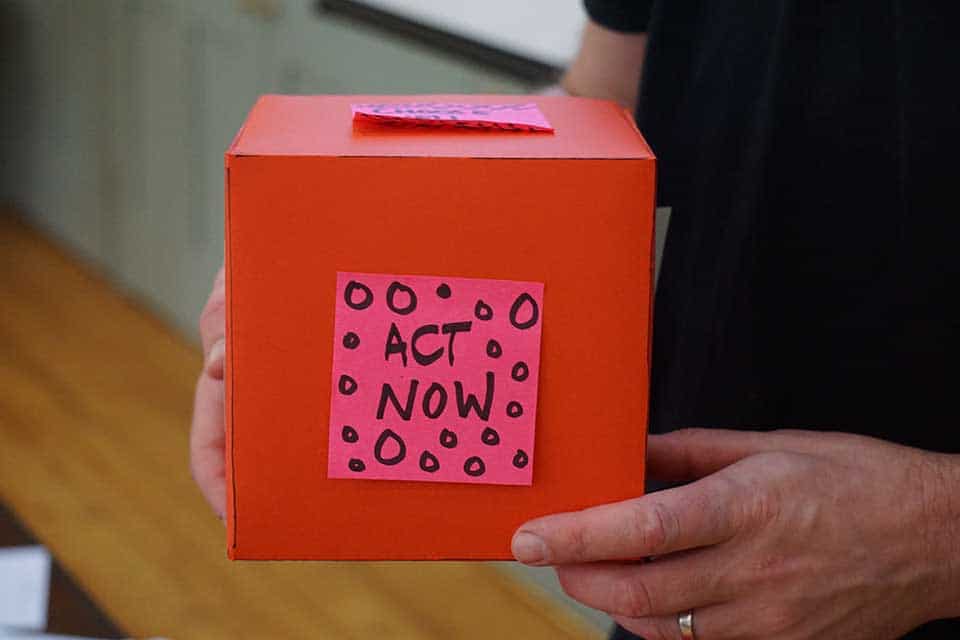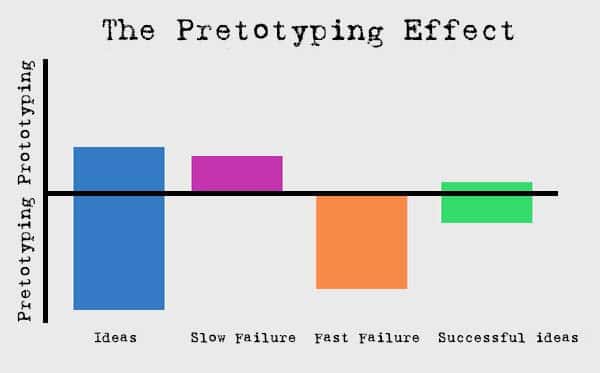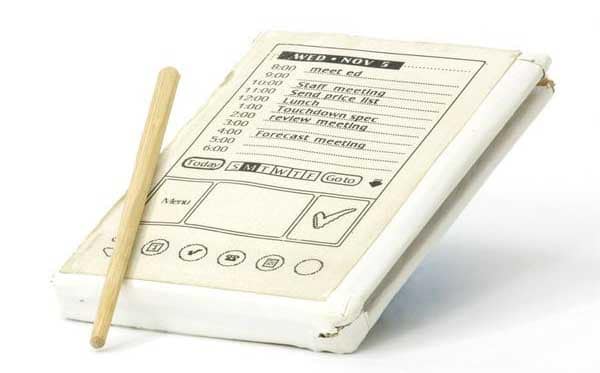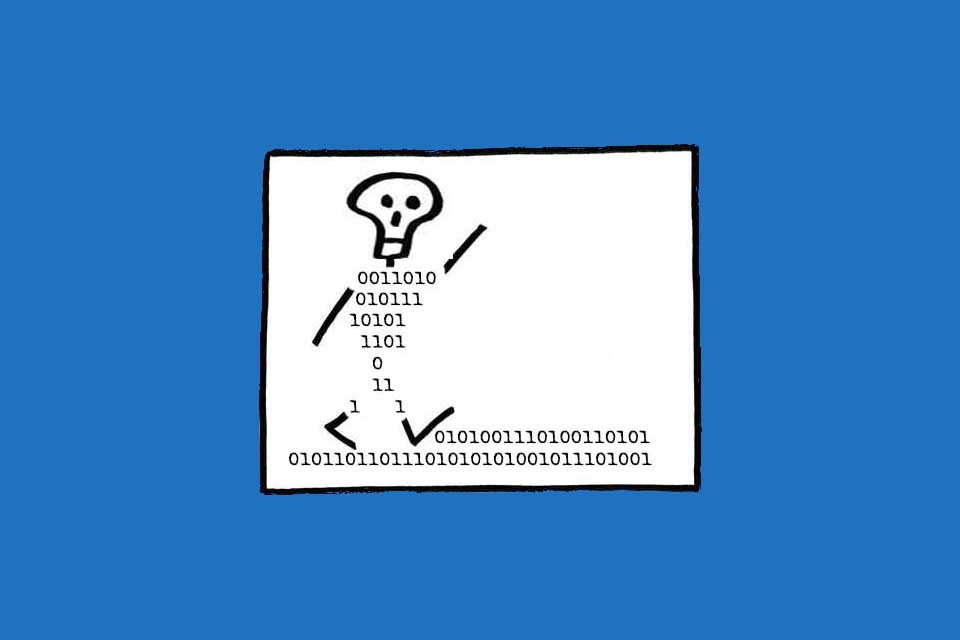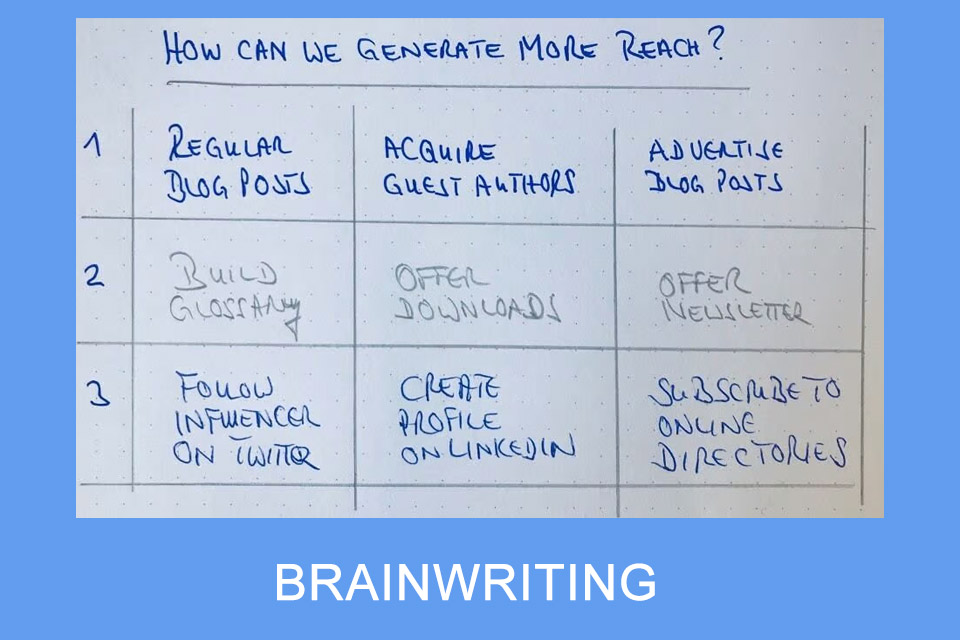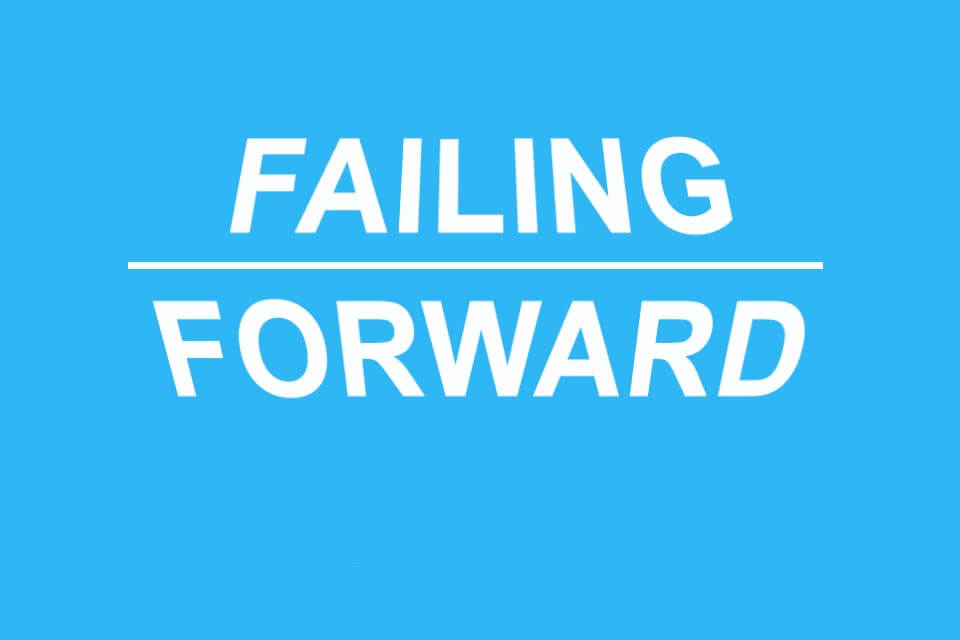What is Pretotyping?
Smartpedia: Pretotyping is a method with which product ideas can be tested with minimal effort by simulating features and functionalities.
Pretotyping Definition
Pretotyping is a method for testing product ideas as quickly and cost-effectively as possible. The aim is to find out whether a product would be bought and used if it existed. Using an extremely simplified version of a product, features and capabilities are simulated, and the interaction of potential customers is observed to determine whether users would
- have an interest in the product,
- use the product in the manner in which it was intended,
- use the product regularly,
- purchase the product.
Pretotyping was created by Alberto Savoia, a former engineering director at Google, and his colleagues Richard Cox Braden and Leslie Barry. They realised that most of the innovations didn’t make it to the market, even though they were competently developed. Pretotyping is an approach to avoid “The Law of Market Failure”. In 2010, Alberto Savoia published the book Pretotype it, in which he introduces a number of techniques and methods that can be used to test product ideas quickly and with minimal cost and time. His latest book is the right it.
Benefits and Goals of Pretotyping
Pretotyping is about receiving feedback on products and product ideas within the shortest possible time – i.e. within hours, or a maximum of a few days. The aim is to identify the “it”, i.e. the essential element for success. It addresses “what” is to be developed and not “how” something is to be developed. It is about ensuring that “the right it” is actually developed.
The benefit of pretotyping results from the gain in knowledge in relation to the invested effort. It is about testing an initial attractiveness and the use of a new product by simulating essential product impressions with as little time and cost as possible. It is not bad if a product idea does not work or a potential product does not find users. The price for this knowledge, however, rises the later this knowledge is gained. “Fail fast” is therefore an elementary premise in pretoyping.
The Difference Between Pretotyping and Prototyping
Pretoyping takes a different approach: it is not about the actual functionality, but about an imaginary solution. The term pretotyping consists of the words “pretend” and “prototyping”. It is therefore merely pretended that a function exists, because ideally that is enough to identify the need for a solution, the type of use and possible challenges. It is a matter of determining the essential success criteria for a product and not how the product is developed successfully, cost-effectively or quickly. As a concept, pretotyping is close to the Lean Startup method and the so-called Minimum Viable Product (MVP) by Eric Ries, which is also one of the methods of pretotyping.
The Pretotyping Methods
There are a number of simple methods that are at best low cost, easy to implement and quick to learn:
- Mechanical Turk: In the Mechanical Turk, a computer is replaced by a person who performs functions so that the probands believe that the computer would do this.
The term goes back to a “fake show automaton” – The Turk – with which the Hungarian Wolfgang von Kempelen wanted to impress Maria Theresa of Austria. In fact, a human chess player hid inside the chess machine and made the moves. For 84 years, The Turk – of course with different secret chess players inside – won almost all the games he played in Europe and America.
Alternative terms for Mechanical Turk are Flintstoning (Fred Flintstone drove his car with his feet), Manualating (as the opposite of automation) or Wizard of Oz (since no one pays attention to the assistant behind the curtain when performing magic). In the age of digitalisation with continuously increasing computer capacities, the demand for this pretotyping method decreases. - Pinocchio: This method is used to perform a form-and-fit validation. The focus is on an absolutely functionless and inanimate product version with which forms and impressions are tested. A dummy, a disposable model or a product box – there are many Pinocchios that are used in the course of pretoyping.
- Stripped Tease or Minimum Viable Product: In this method, a product is produced with a minimal range of functions, with the aim of finding out as much as possible about the product and the expectations of the users. The challenge is to define the “minimum” in such a way that the product is already usable, i.e. “viable”, and offers an initial benefit for customers. Subsequently, customer feedback helps to develop a next product version in order to obtain feedback.
For Alberto Savoia, three critical characteristics or questions are the most important: Would customers use and buy the product? Do users understand how the product works? And: As a manufacturer, are we able to deliver the product with the available resources if it becomes necessary? Put simply: it’s about the value, usability and feasibility of the product. - Fake Door: Here a product is offered to customers – e.g. in a restaurant via the menu – although the product itself does not yet exist. This method works when customers already know, use or consume other products of the company.
- Facade: The façade method is related to the fake door method, but here a façade – e.g. a new website for a new product or service – is erected and promoted to determine the response. Both Facade and Fake Door users should be particularly careful, because selling requires trust, and trust is difficult to regain after it has been disappointed or destroyed. Both methods are therefore compared with a Potemkin village – as a synonym for pretending false facts.
- Infiltrator: This technology uses an existing setting and continuous customer visits, like in a supermarket or DIY store. The Infiltrator places its product or product packaging and observes customer behaviour and customer interest. Ideally, this should be agreed with the operators of the supermarket or DIY store.
- Pretend-to-Own: This method minimises the risk of misinvestment and promotes borrowing or renting required products, pretending they belong to the vendor. In this way, resources can be conserved and market needs evaluated at the same time.
- One-Night-Stand: This technique focuses on the temporal access to a product or a shop. Pop-up stores, limited goods, and temporary offers are common characteristics of this pretotyping method.
- YouTube: This method propagates new products and product ideas by showing them in YouTube videos. The number of video views, the desire for product information etc. are indicators of product interest.
- Impersonator or Re-Label: Here it is a question of providing an existing product with its own logo in order to pretend that the product belongs to the product family. This technique is often used to test new packaging and to determine initial interest in an apparently new product. In marketing, re-labelling is a common tool, for example in the OEM market.
- Impostor: Manufacturers use this method to try to imitate existing products and pass them off as their own. They copy known products, package or describe them differently than the originals, and observe the initial reactions of potential buyers.
- Provincial: This technology addresses step-by-step market access and thus a local product launch before internationalisation or worldwide availability is sought.
In sum, there is a wide range of different methods and techniques with which many people come into contact, consciously or unconsciously. They help to eliminate bad ideas and to pursue good ones. They help with failure, but not with slow, cost-intensive failure, but with fast failure. “Fail fast” is therefore another premise in pretotyping.
Pretotyping Examples
A nice Pinocchio example goes back to the inventor of Palm Computing, Jeff Hawkins. Remember the Palm Pilot, which was a product in global demand at the turn of the millennium. It was a personal digital assistant and thus practically a forerunner of today’s smart phones. Jeff Hawkins produced a pretotype – even if the term did not exist at the time – by creating a dummy out of wood and paper and showing it to people again and again over several weeks. He wanted to determine whether he himself would use such a product regularly before investing time, effort and expense in the actual production of a prototype. More than 30 million copies of the Palm Pilot were sold worldwide.
The IBM Speech-to-Text Pretotype is a well-known example of a Mechanical Turk where users were asked to try a technique that would convert spoken language into text using a microphone and a computer. Since more than 30 years ago computers were not as powerful as they are today, the text was entered into a text editor by a person sitting in the adjacent room using a keyboard. The speakers were given the impression that the Speech-to-Text solution already existed. “Pretend” and “prototyping” in pure culture. As a result, IBM recognised at the time that most people’s voices diminished as they spoke and that background noises influenced their intelligibility. A finding that could have been gained with a real prototype instead of a mechanical turk, but at a significantly higher cost.
In August 2008, the founders of Airbnb promoted an alternative overnight accommodation in San Francisco on their website. The One-Night-Stand included an air mattress and breakfast for 80 dollars. 3 guests booked this option, 240 dollars was Airbnb’s revenue. In 2017, Airbnb turned over 2.6 billion dollars. An impressive example of how pretotyping can turn a shortage of money into a thriving business idea.
Google Glass was presented for the first time in a YouTube video, but not the glasses as such but the view through the glasses was shown. This was combined with the option to purchase an “Explorer Toolkit” for 1,500 dollars. This allowed Google to find out how much initial interest there was in the product even before production started.
For each pretotyping method there are very descriptive examples. The inventor of Tesla, Elon Musk, used a Lotus Roadster, redesigned it (Impostor method) and asked interested parties if they would be willing to be put on a waiting list for the car for 5,000 dollars. McDonald’s is testing new products in selected stores – have you ever ordered a pizza from McDonald’s? The Provincial method makes it possible. And the first iPhone was also no more than a MVP with only a small range of functions – yes, customers could already make phone calls with it – and yet it is considered a prime example of a disruptive innovation.
The Pretotyping Manifesto
Innovators beat ideas
There are many good ideas, but more important for the success of a product are the innovators, their enthusiasm, their approach and their will to achieve success.
Pretotypes beat prototypes
Pretotyping is superior to prototyping. It is faster, cheaper, simpler and should be done before a possible prototyping.
Building beats talking
Doing, testing, trying is more important than talking.
Now beats later
Early feedback and early insights are more important than later clarity. “Fail fast” saves time and money. In addition, early understanding also helps to develop a solution and, if necessary, to shorten the time-to-market.
Commitment beats committees
Of course, passion, vision and action are much more important than a coordinated procedure lasting weeks or months. The advantage lies in simplicity and speed, not in working in committees.
Data beats opinions
It is always good to have an opinion, but it is much better to be able to make decisions based on data, evaluations and figures.
Don’t finish what you’ve started
It’s not about doing everything down to the last detail and trying it out if it’s obvious that a product idea doesn’t promise success.
Failure is an option
Failure is part of the story. Even if companies don’t like to hear it, it is even likely that product and business ideas will fail. This makes it all the more important to gain clarity as early as possible.
Scarity brings clarity
Keep it short and sweet, or: the scarcity and simplicity of the tests provide for the knowledge gain.
The more the messier
The more things are tested and tried out, the more difficult the evaluation becomes. The goal must be to keep things as simple as possible.
Reinvent the wheel
An appeal also to question existing solutions, despite their distribution and suitability for everyday use. Often disruptive innovations can only arise in this way.
Play with fire
Those who take no risks will rarely be able to successfully develop new products.
Pretend before you spend
Do you know which tools you should ideally use for pretotyping? It’s paper and pencil, because that’s all you need, at least in the beginning, to deal with your specific question. Would customers buy your product in the supermarket? Then place several dummies on a shelf and observe the interaction of potential buyers. You want to know whether customers of a delivery service would pay more money for a guaranteed delivery to the front door, then provide the offer for a limited period of time. If you also want to know how much money this extra service is worth, test different pricing options.
“Pretend before you spend” is the most important sentence. At the beginning it is not a question of whether you have enough messengers who can actually deliver the ordered goods guaranteed at the apartment door, whether you have enough mobile storage space for the goods that you could not deliver at the apartment door, as the recipient cannot be found. These questions will not come to light until a later date. The aim is to obtain information as quickly as possible and at the lowest possible cost. Information that you can collect within a few hours or within a few days at the most. If a procedure sounds too complicated, then so is it. Simplify the pretotype, regardless of whether you want to test a product idea, improve a process or introduce a new service. The only things companies need are customers or users, a clear question and creative (and slightly subversive) ideas. Have fun and success with it.
If you like the article or would like to discuss it, please feel free to share it in your network. And if you have any comments, please do not hesitate to send us a message.
Here you will find additional information from our Smartpedia section:
